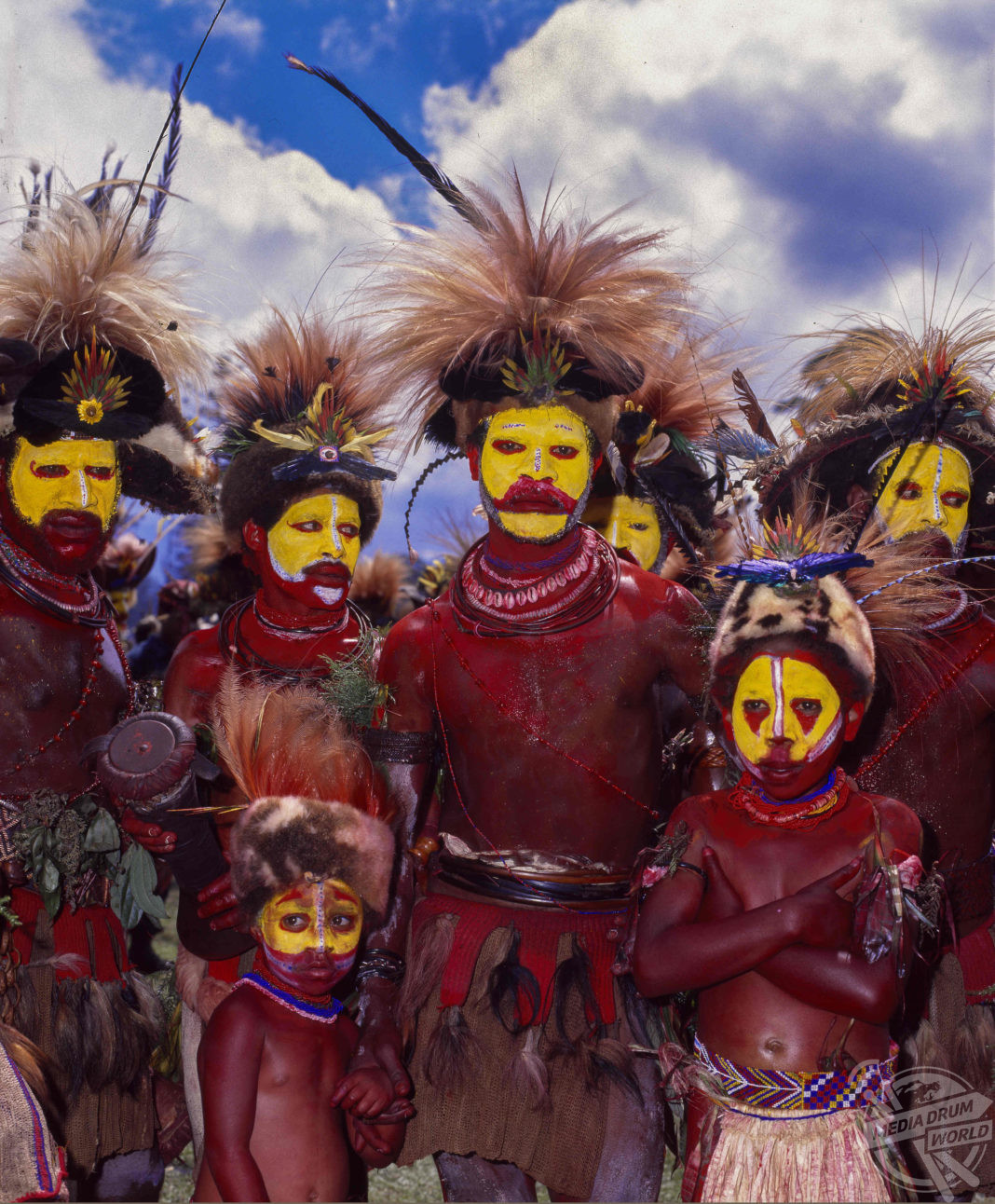By Alexander Greensmith
TRIBESMEN dolled up in vibrant multicoloured body paint stun as they DRESS FOR BATTLE.
While the Huli tribe are fearsome warriors and hunters, women and men both have a soft spot for their hair as these spectacular shots show.
A wide shot shows a father – caked in paint and a tropical wig – teaching his son to shoot an arrow. Another image reveals a colourful elder male wearing a plant reed through his nose.
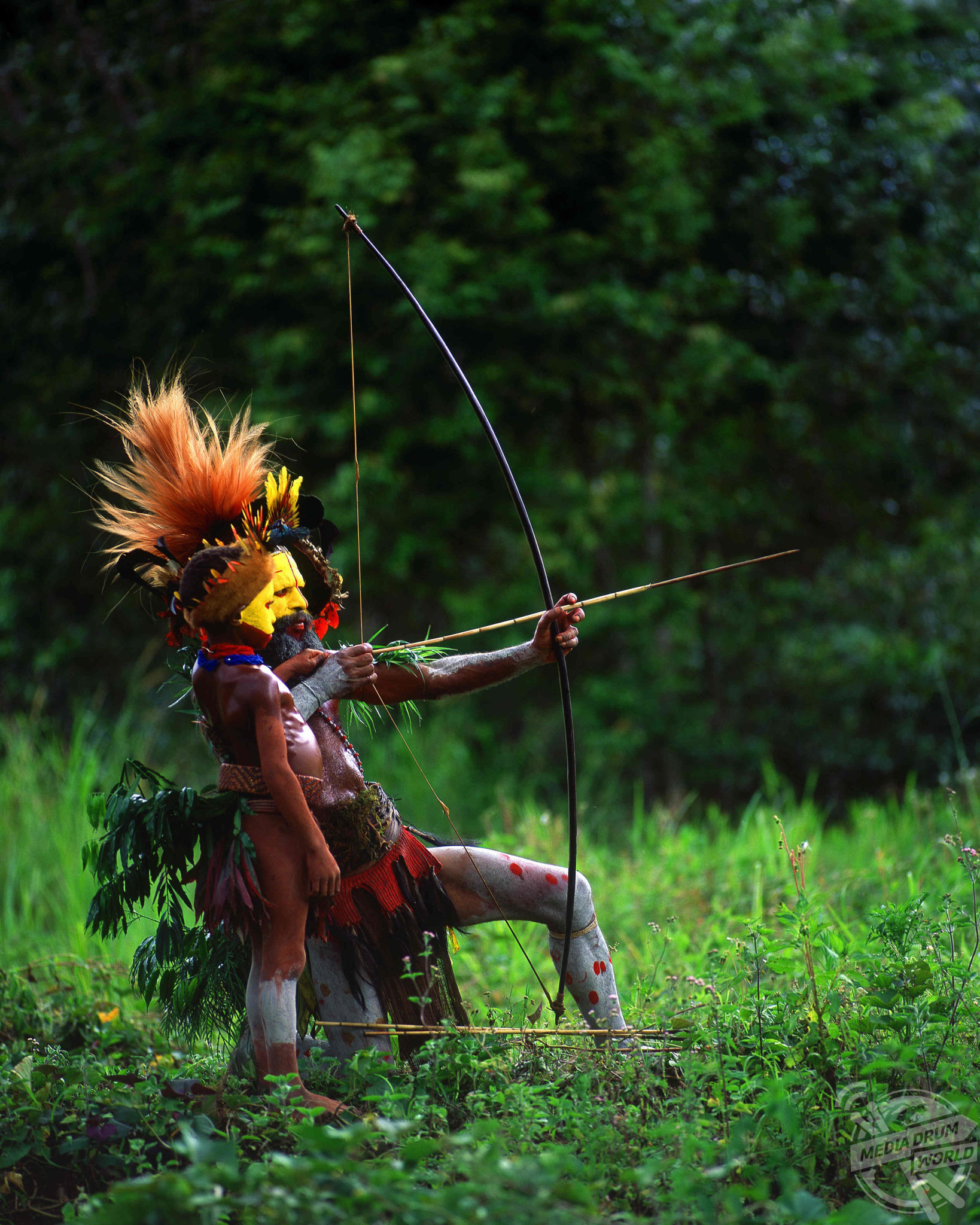
Men wear floral arrangements and dye their beards, with blood-red body paint and yellow faces to intimidate their enemies.
These indigenous people live in The Highlands, Papua New Guinea, found in the mountainous Hela province of the Pacific nation.
The tribe speak the languages of Huli and Tok Pisin but have acquired English skills in recent years and have welcomed visitors.
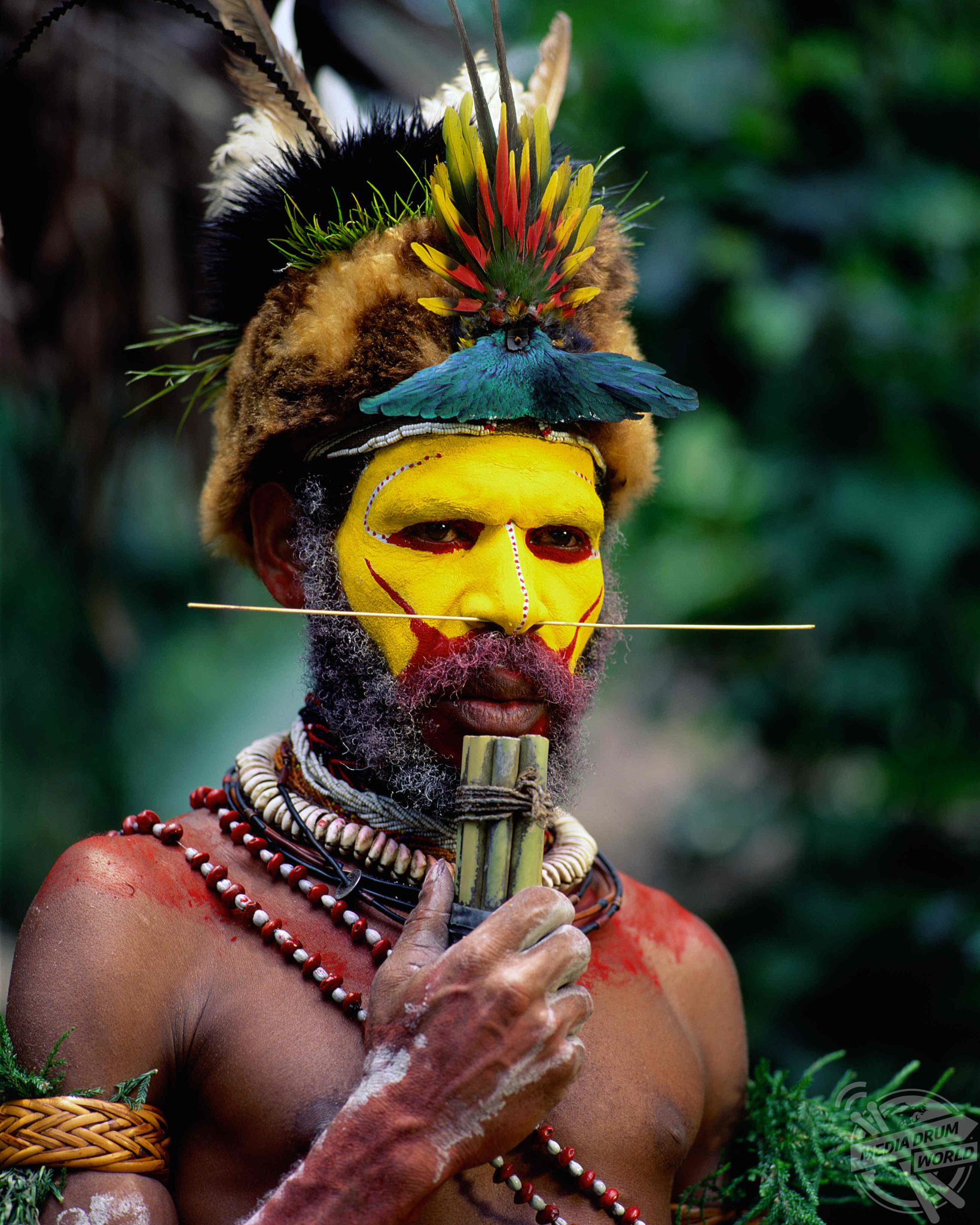
This allowed talented photographer, Jim Zuckerman (72) from Nashville, USA to visit.
“They live very simply in small villages and grass huts. They interact with the outside world but don’t seem affected by it very much,” said Jim.
“The Huli believe they descended from a single male. Their main commodity of exchange – for marriages, death indemnities, and ritual payments – is the pig.

“The clay that is used to decorate their faces and bodies is sacred in their culture as is the red ochre clay. The colouration they use is unique in the Highlands of Papua New Guinea and sets the Huli apart from all other tribes.”
The colourful camerawork was captured by the Tennessee photographer on a Mamiya RZ 67 and Canon 1Ds Mark II.
The ethnic group are one of the largest tribes in the world with an estimated population of 250,000 according to the Papua New Guinea 2011 census.
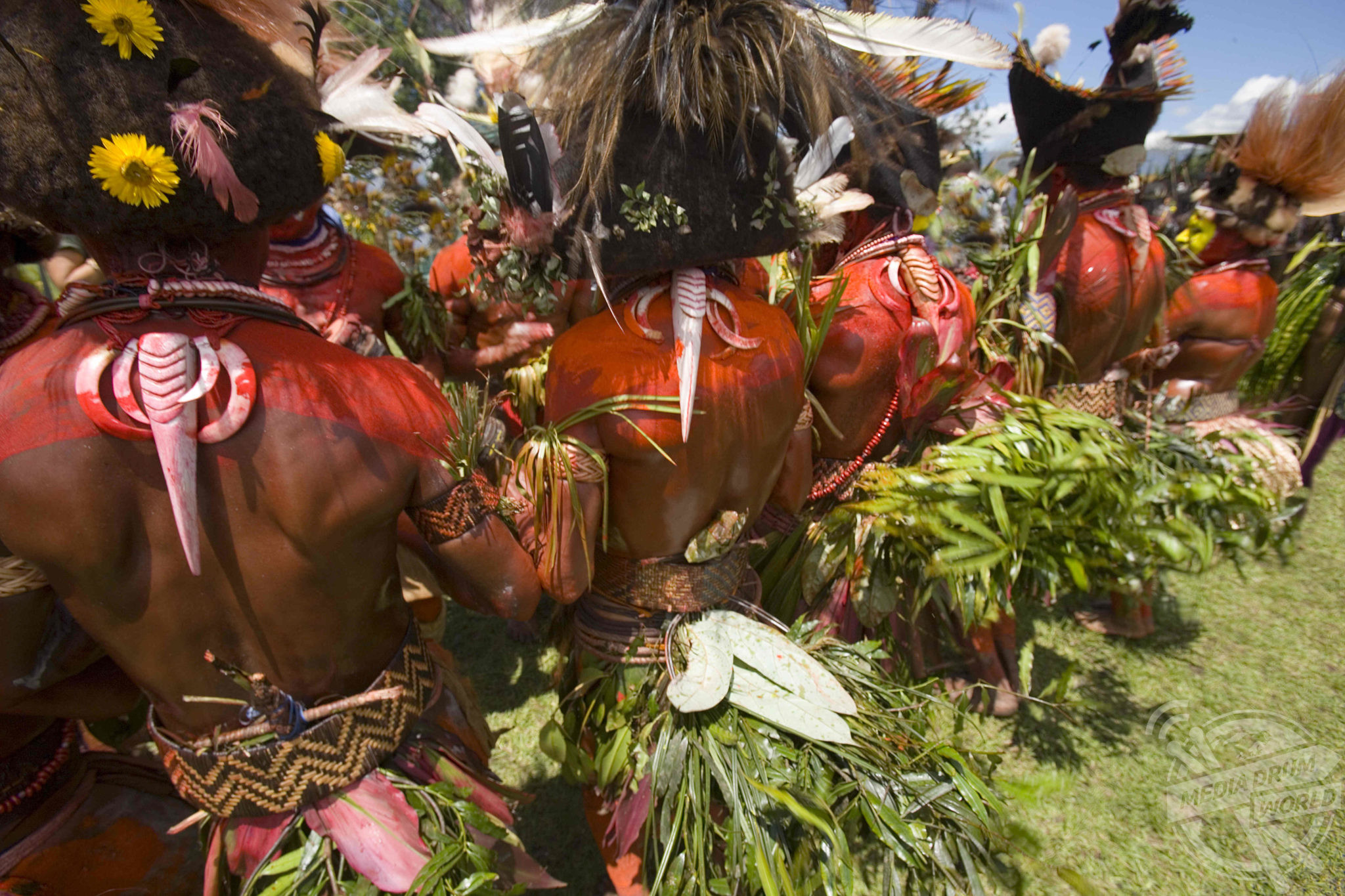
Mr Zuckerman’s photos were taken during the visitor-friendly time of the Sing Sing Festival, first held in 1957 by Christian missionaries to reduce tribal warfare.
“The impression I got from the Huli as well as other tribes was that the veneer of civilisation is very thin, and that at any moment violence could break out,” Jim confessed.
“Most of the guest trucks, buses, and other large vehicles have heavy gauge metal mesh covering their windows because locals like to throw stones at the glass.

“The idea of the Sing Sing was to display proudly one’s tribal attire, makeup, and music in a friendly way. Dozens of tribes gather for this festival, and it is a feast for the eyes.”
The women of the tribe are expected to live with children and piglets, and they are strictly prohibited from entering the men’s living quarters.
Marital relations practiced by the most traditional of the tribe are known to take place in the gardens.

“The origin of the wars is over land, pigs, and women in that order. The children don’t go to school other than fourteen to fifteen year old boys who go to ‘wig school’ in preparation for marriage,” added the 72-year-old.
“Warfare is never-ending in the Huli culture. They prefer vengeance for a serious wrong than negotiation.”
In February 2020, The UK Foreign and Commonwealth Office (FCO) advised against all but essential travel to Hela following significantly increased levels of tribal fighting and the declaration of a state of emergency by the Papua New Guinea government. But the American photographer felt safe throughout.

“The Huli warmly welcomed me and the interaction with them was very pleasant. They enjoyed seeing their pictures on the back of my camera,” Jim said.
“They felt complimented and happy that I chose them as my subjects. The brilliant yellow in contrast with their dark skin makes compelling images.
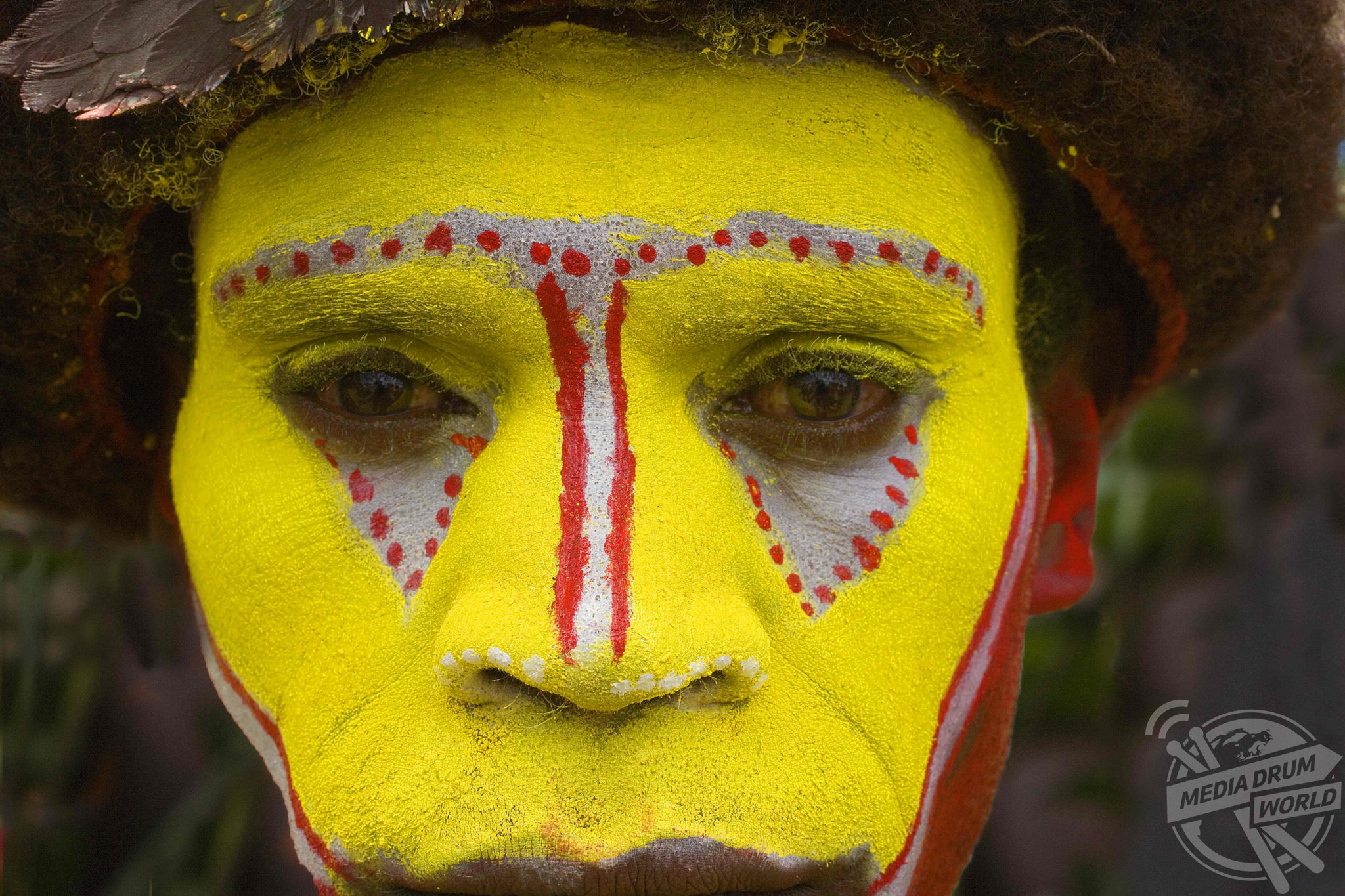
“I found their style of dance and chant particularly compelling and mesmerising. I am intrigued interacting with stone age people; as it almost feels like a different species of human.”
You can follow the daring photographer on Instagram: @jim.zuckerman.photography.

